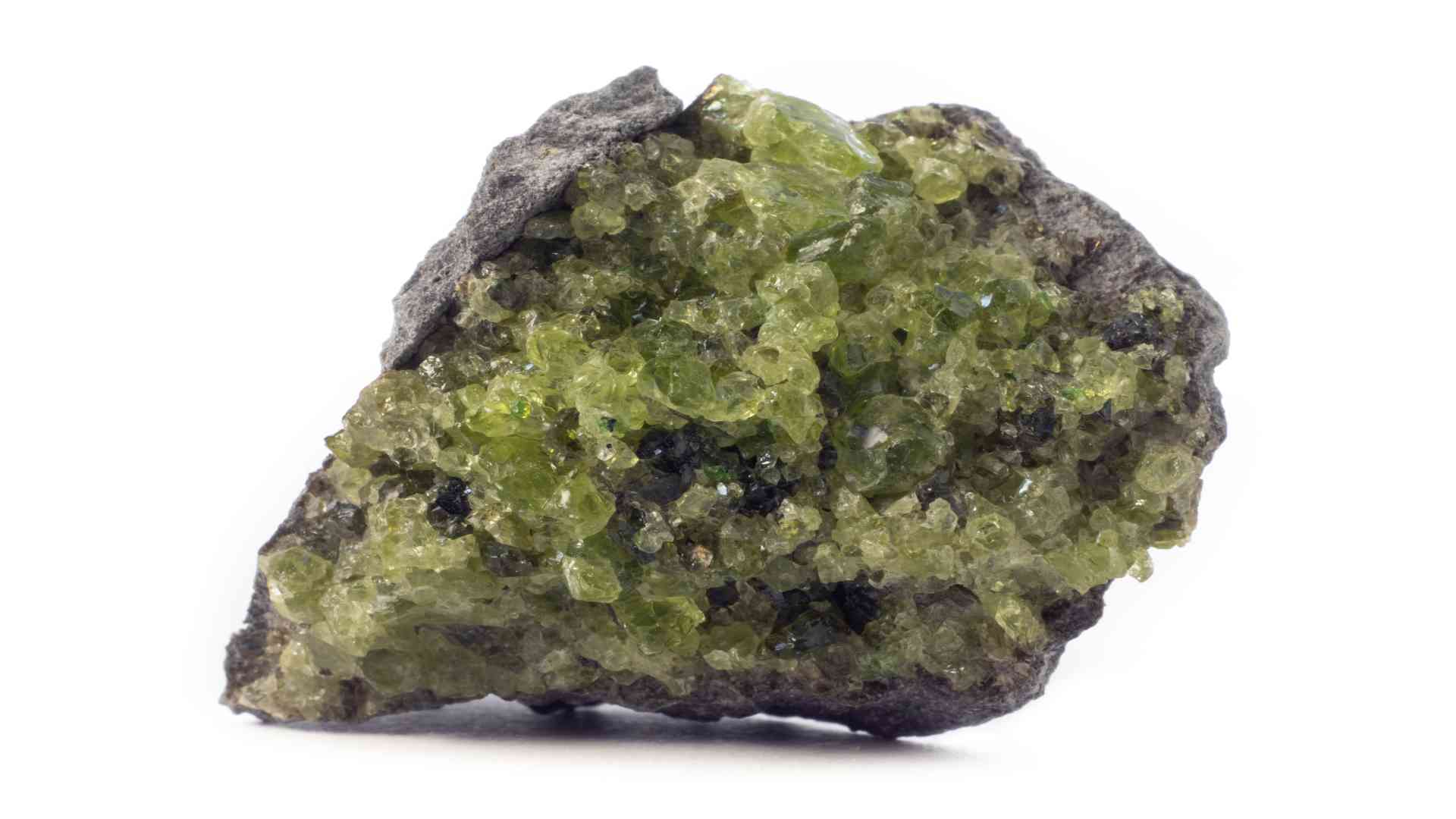The Impact of Boron on Olivine
Olivine is a crucial element found in Earth’s upper mantle. Although boron is typically low in concentration, it can significantly impact olivine’s properties. Boron is generally stable in olivine, resulting in a massive increase in conductivity.

Olivine
Boron And Olivine
Though boron concentrations among the most recoverable olivine samples are very low (0.5 ppm), olivines with extremely high boron levels (23-2100 ppm) and forsterites with boron levels (160-230 ppm) have also been discovered.
Dr. Joshua Muir, a postdoctoral researcher at the IGCAS, and their Peking University collaborators studied the behavior of boron-hydrogen deformities indicating that water could significantly improve boron compatibility by constituting very stable [B-Si-H] structures in its lattice.
Irrespective of pressure, temperature, iron, and SiO2 activity, the existence of hydrogen and boron in olivine minerals produced B-H defects, resulting in gradual enhancement of the solubility of boron and hydrogen. This further anticipated the ability of these elements to carry boron in the deep mantle.
The research also found two stable B-H deformities: an associated state (that bound H) that is stable at low temperatures and a dissociated state (with unbound interstitial H) that is stable at high temperatures. This temperature-dependent adjustment in the boron-hydrogen defect complexes impacts isotope partitioning by increasing the favored boron coordination (3-fold to 4-fold), preferring 10B over 11B.
Boron isotopic fractionation was postulated to be an increasing function of temperature. Also, the production of interstitial hydrogen at extremely high temperatures cause a significant increase in H diffusion and conductivity in boron-doped zones of the mantle.
A Short Note on Olivine
Olivine is a group of minerals in mafic and ultramafic igneous rocks, such as dunite, basalt, diabase, gabbro, and peridotite. It gets its name from its typical green color and it is the word used to refer to the species when discussing this as a rock-forming mineral.
It is also the primary constituent of the green gemstone peridot. It crystallizes with plagioclase and pyroxene to produce gabbro or basalt. These rocks are usually located at divergent plate boundaries or hot surfaces within tectonic plates.
Olivine is among the first minerals to be weathered. As it is easily transformed by weathering, it is not found in sedimentary rocks. It is the only widely available component of sand or sediment whenever the deposit is close to the source.
Olivine Composition
Olivine is a group of silicate minerals with the general chemical formula A2SiO4, where A is most often Mg or Fe. It can also be Ca, Mn, or Ni in unusual circumstances. As the mineral has a chemical composition between pure forsterite (Mg2SiO4) and pure fayalite (Fe2SiO4), Mg and Fe can freely replace one another in the mineral’s atomic arrangement. This type of consistent compositional variation is referred to as a “solid solution,” Therefore, the olivine formula is (Mg, Fe)2SiO4 Doesn’t make much sense with search console results.
Physical Characteristics
- The mineral is generally green but can also be yellow-green, greenish-yellow, or brown.
- It has a radiating surface that is transparent to translucent.
- Its hardness lies from 6.5 to 7.0 on the Mohs scale.
- It has an orthorhombic crystal system.
Applications of Olivine
- It is not often used in industry but has a few essential uses. Most of it is used in metallurgical processes like a slag conditioner. Forsterite, i.e., high magnesium olivine, is placed in blast furnaces to avoid contamination from steel and form slag.
- It is also used as a refractory material. It makes refractory brick and works as casting sand. These uses are decreasing as alternative materials are now affordable and easier to obtain.
- It is also the mineral that makes up the gemstone peridot.
The Gemstone Peridot
Peridot is a lovely green gemstone that has been treasured since the earliest civilization. It is thought to have mystical powers that tune and regulate physical, mental, and emotional phases and brings unity, good health, quality sleep, and peace. Peridot is the birthstone for August month and can be found in shades of olive green or lime green.
Most of the world’s peridot supply comes from the San Carlos Reservation in Arizona, mined from basalt flows comprising granular nodules. Peridot stones from this region are typically a few carats in size and include visible particles of other minerals. They are reduced in Asia and exported to the United States for use in commercial jewelry.
Peridot crystals of higher quality and larger size are mined in Pakistan and Myanmar. Olivine crystals are found in metamorphic rocks there. These are typically found with serpentine or dolomitic marble.





